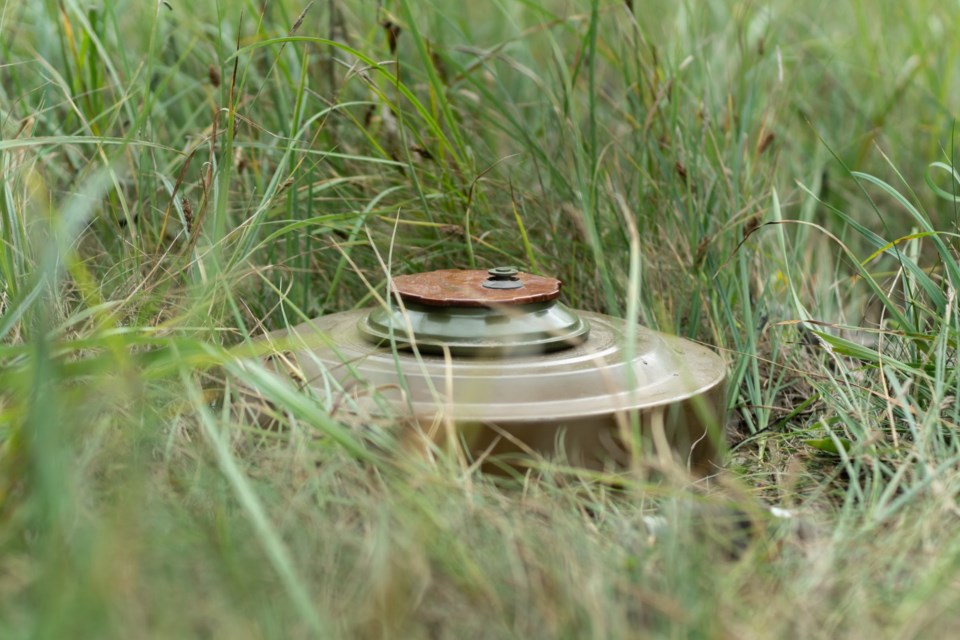WESTERN PRODUCER — It’s the time of year when pundits speculate on production and export numbers for various crops in key regions of the world, but that has become a tricky exercise for Ukraine.
“It’s really difficult to compare year-on-year because you don’t know what various people are including and what they’re not including,” said Chuck Penner, analyst with LeftField Commodity Research.
Too many questions remain unanswered.
Are the crops in Russian-occupied territories of Ukraine considered the domain of Ukraine or Russia?
How will the fighting and unexploded ordinances affect spring seeding?
What is happening with the Black Sea grain corridor that allowed safe exports and cross-border sales to disgruntled neighbouring countries in the European Union?
A good case in point showing the confusion is UkrAgroConsult’s recent Ukrainian pea production forecast.
Ukraine harvested 270,000 tonnes of the pulse crop last year, which was half of pre-war levels and the lowest production total in 10 years.
UkrAgroConsult said that is because many of the main pea production areas are now under Russian control, such as the Nikolayev, Kherson, Zaporozhye, Donetsk and Kharkiv oblasts.
It reports that farmers planted 318,000 acres of the crop as of early May, which is about 250,000 acres below pre-war levels, but slightly higher than last year. That is due to the lost territory.
Another example of bewildering information is the United States Foreign Agricultural Service’s Ukraine canola production forecast of 2.7 million tonnes for 2023-24.
That would be a 17 percent reduction compared to last year’s harvest and the smallest crop since 2017-18.
It said acreage is down and yields may be as well because of a lack of labour and rising prices for fuel, crop protection products and fertilizer.
Meanwhile, APK-Inform forecasts a record 3.5 to 3.6 million tonnes of Ukrainian canola production and robust exports of 3.3 to 3.4 million tonnes.
But the forecast comes with a caveat that about half of Ukraine’s canola shipments move through Bulgaria, Hungary, Poland, Romania and Slovakia, where there is a temporary ban on Ukrainian imports through June 5.
Penner said the forecasts seldom come with any explanation of how they were derived.
“What are you including in that total and what are you not?” he said.
“It’s not always clear what they’re saying.”
Those details are important and can help explain discrepancies like why the U.S. Department of Agriculture is sticking with a 2022-23 Russia wheat forecast of 92 million tonnes, while the Russian government and analysts from that region of the world insist it is between 102 and 104 million tonnes.
The USDA does not include Crimea in its Russian estimate, but that only explains part of the difference, because that region only produces about 1.3 million tonnes of wheat.
Penner said the correct numbers are important for Canadian growers, especially for a thinly traded commodity like peas.
Ukraine was once a sizable player in that market. Growers harvested as much as one million tonnes of the crop in 2017.
Ukraine’s sales to India ranged from 149,000 tonnes to 385,000 tonnes prior to India blocking pea imports in 2019, according to the UkrAgroConsult article.
These days, most of the country’s peas are shipped to Western Europe’s feed markets, so it is not much of a competitive threat to Canadian growers, said Penner.
Meanwhile, Russia’s pea production is rising due in part to its occupation of Ukraine’s prime pea-growing territory.
The country harvested 3.6 million tonnes of peas last year, topping Canada’s 3.4 million tonnes.
Penner said that could be problematic because Russian peas are now moving to China because of a new phytosanitary agreement signed by the two countries at the end of 2022.
Those Russian peas will compete head-to-head with Canadian peas in Canada’s top market.
China bought 816,500 tonnes of Canadian bulk peas through the first eight months of the 2022-23 campaign, or 57 percent of total bulk sales for that period, according to the Canadian Grain Commission.
UkrAgroConsult reported Ukraine is in active negotiations with China about paving the way for pea trade between those two countries.
Penner doubts that agreement will happen if the war is ongoing because all sorts of crop shipments to China have been “severely curtailed” as a result of the conflict.
Contact [email protected]

